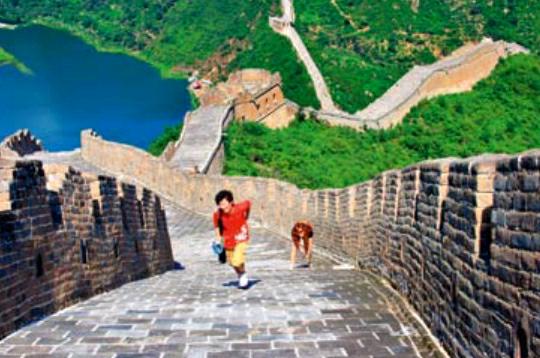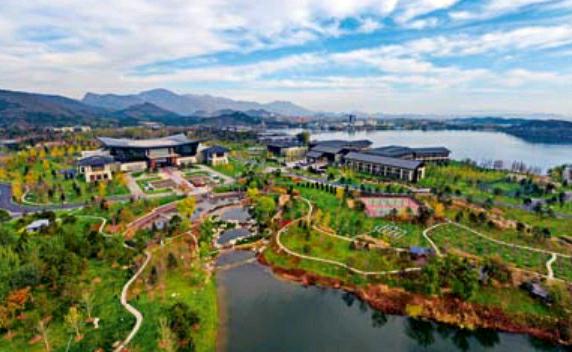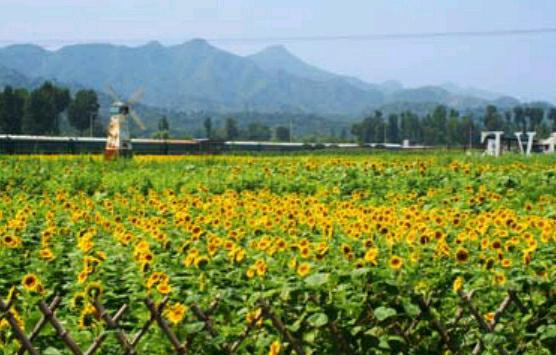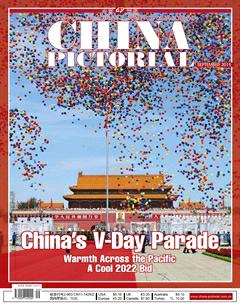Huairou: Back Garden of Beijing
by+Cecile+Zehnacker
Huairou is a northern suburban district of Beijing located about 50 kilometers from the capitals downtown area. Its stunningly green landscapes and bucolic villages make it the perfect getaway to escape the crowds of Beijing, but a single weekend is definitely not enough to take in everything Huairou has to offer.
Huairou starkly contrasts most impressions of Beijing: Its decidedly rural. After leaving the highway towards Sanduhe, which I chose as my starting point to explore Huairou, we continued along small roads featuring green and picturesque scenes of rivers, gardens and small houses, complemented by a deliciously peaceful feeling that is hard to find in hectic downtown Beijing. Sanduhe is a small village on the Huaisha River. In Sanduhe, like in other nearby villages, time seems to have stopped. Seniors conversing on front porches were surprised to see a foreigner wandering around. A pathway along the Huaisha River offers a pristine evening walk as the sun sets over the mountains. Along the way are only backyard gardens where locals grow their own vegetables on one side opposite green mountains on the other.
The mountains sit near the Great Wall. Several sections of the Great Wall start in Huairou, such as Mutianyu, Jiankou and Huanghuacheng. Mutianyu is the only section of the three to be totally renovated. It is easy to access and offers many facilities, making it the perfect Great Wall section to visit with family. Jiankou, near Xizhazi Village, and Huanghuacheng, which starts in Jiuduhe Village, are preferable for adventurers – some sections are not renovated at all and require good climbing skills. All three offer breathtaking views of the surrounding mountains, forests and lakes, and when hiking on this legendary path, its hard to believe that construction of the wall started as early as the 7th Century B.C. and that the entire wall stretches 6,700 kilometers from Liaoning Province in the northeast to Qinghai Province in centralwest China.
Just outside Mutianyu entrance are many small stands of fruit vendors. Hairou is also well known for its fertile earth and delicious fruit such as apricots, plums, peaches, pears, and hawthorns. Each is definitely worth a taste and can also be found in many picking gardens in the periphery.
While biking through the mountains around Sanduhe, I discovered the beautiful village of Liuduhe, which was cited as one of “Beijings most beautiful villages.”It is a small village also along the Huaisha River, which again offers beautiful scenery and the perfect place to relax. It is famous for its abundance of Chinese chestnuts and has over the years earned the reputation as the village of “Chestnut History.”
Although nice, the bicycle somewhat limits ones access to the vast surroundings. A little further along, other great spots can be found. One of the most well-known is Hongluo Temple, one of the biggest Buddhist temples in northern China which was first built during the Tang Dynasty (618-907). Conveniently located between Hongluo Mountain and Hongluo Lake, the temple offers amazing views and a peaceful atmosphere. Although the steep path to reach the temple can be intimidating, it is worth it and the climb itself offers breathtaking views of the surrounding green mountains and blue lakes.
Hongluo Temple is sandwiched by two huge lakes. In the south is Huairou Reservoir. The site holds 100 million cubic meters of water and along with Miyun Reservoir supplies much of Beijings water. It is also the site of Huairou Solar Observation Station, but this lake is not open to the public. For amusement and fun, the place to go is Yanqi Lake at the foot of Yanshan Mountain. Yanqi, which literally translates to “Wild Goose Roost,” is a great birding locale during spring and autumn when crowds of rare migrant birds stop into the area. It also offers numerous water activities such as motorized dragon boats, paddle boats, aquatic para-glider, and more, making it the perfect destination to escape the summer heat.
These are just a handful of the many places to discover in Huairou District. Head north and you will find Qinglong Gorge as well as several natural scenic areas. With so many attractions and natural landscapes, it is no accident that Huairou District, also known as the “back garden of Beijing,” has become suburban Beijings most popular holiday resort.

